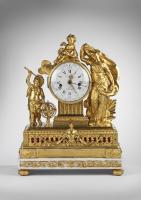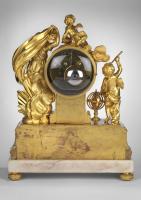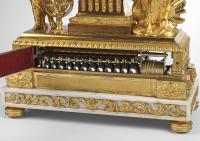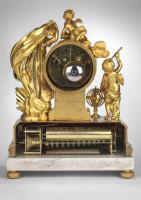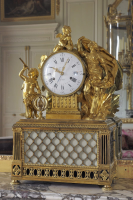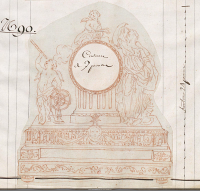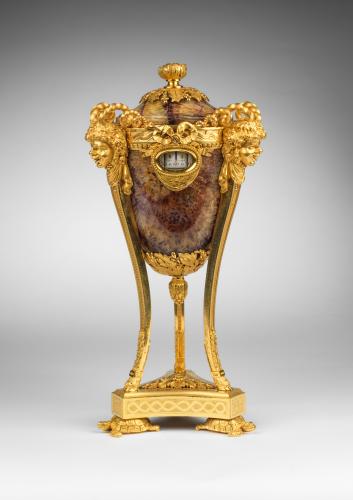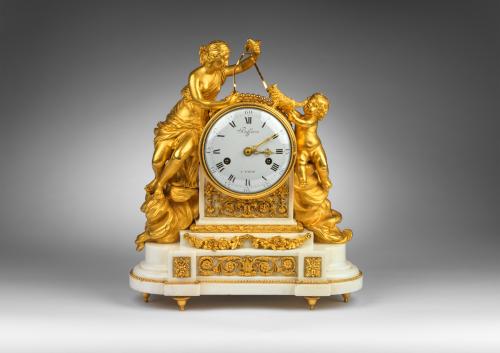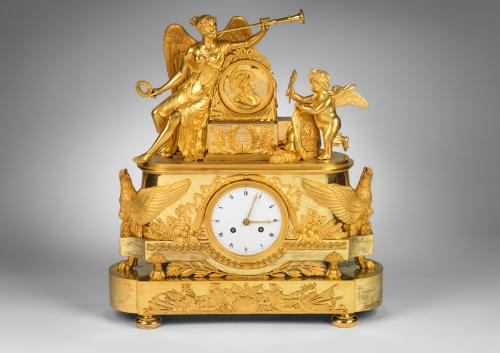
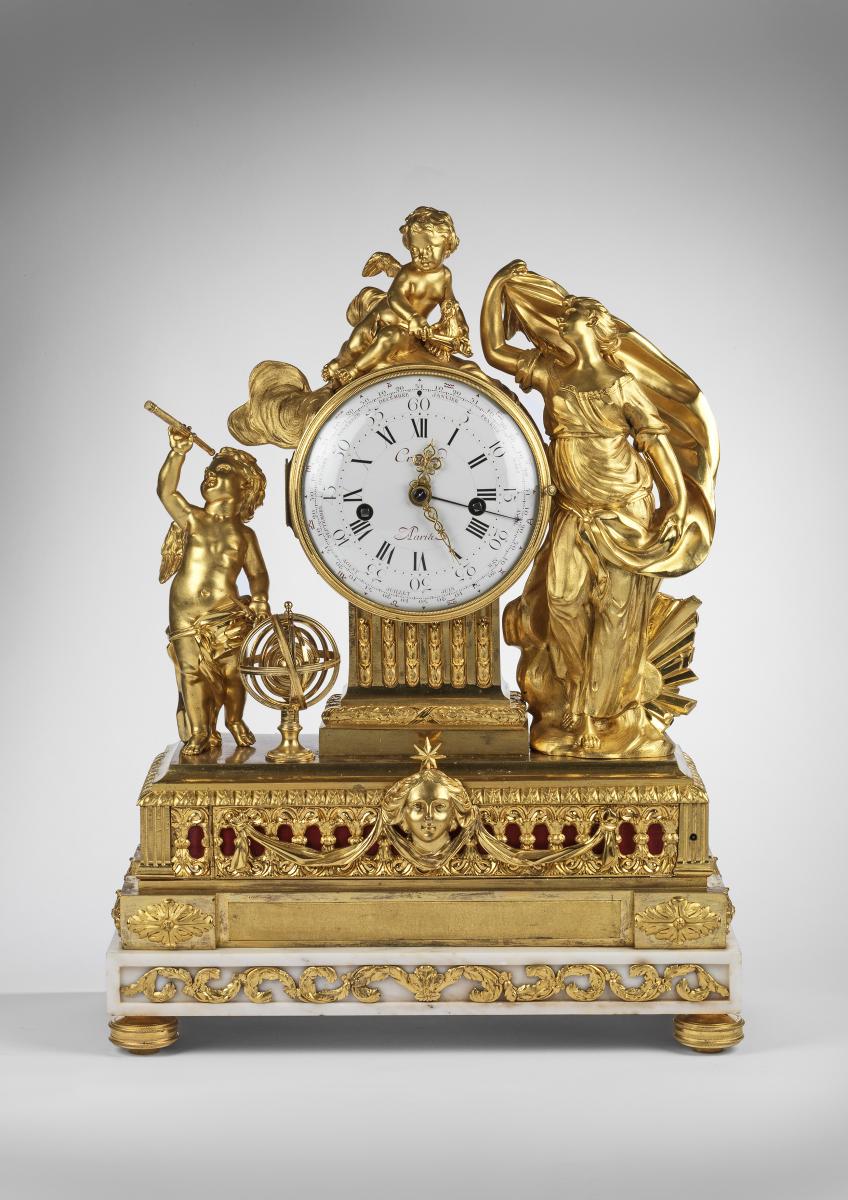
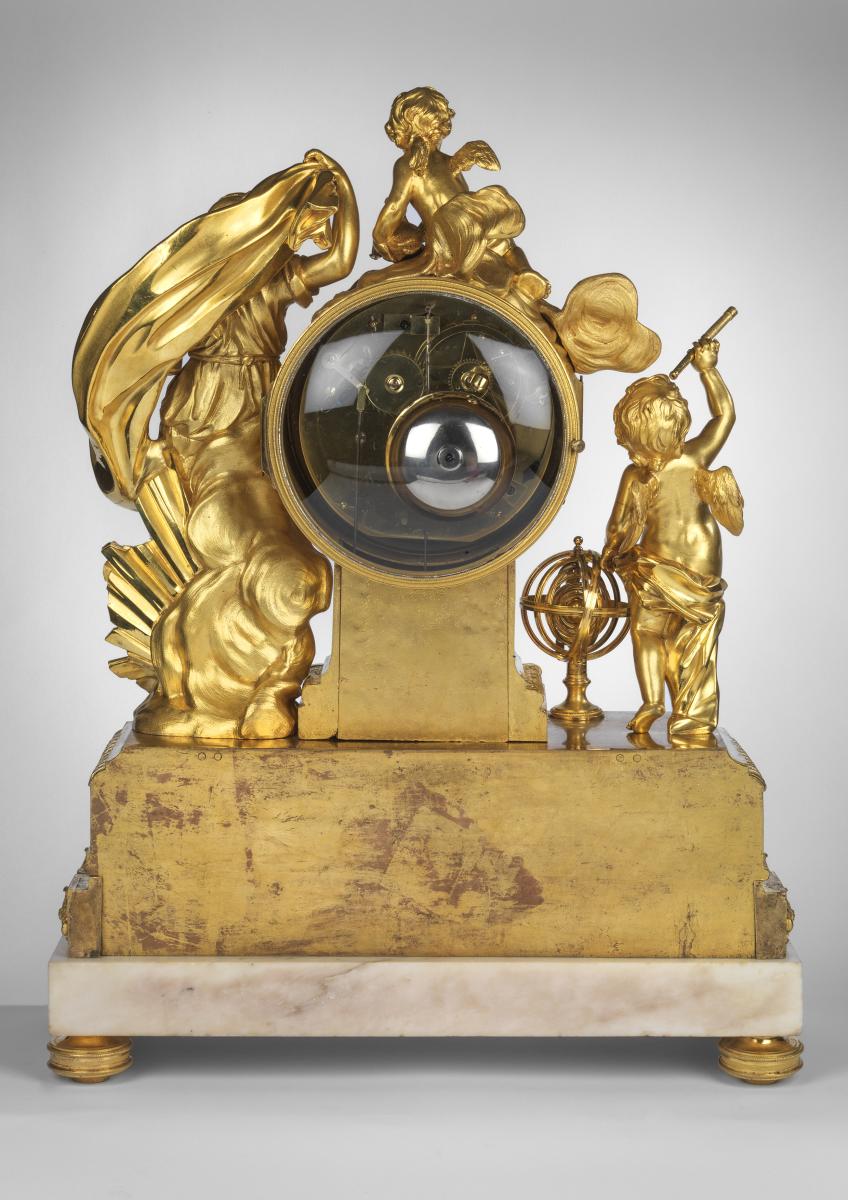
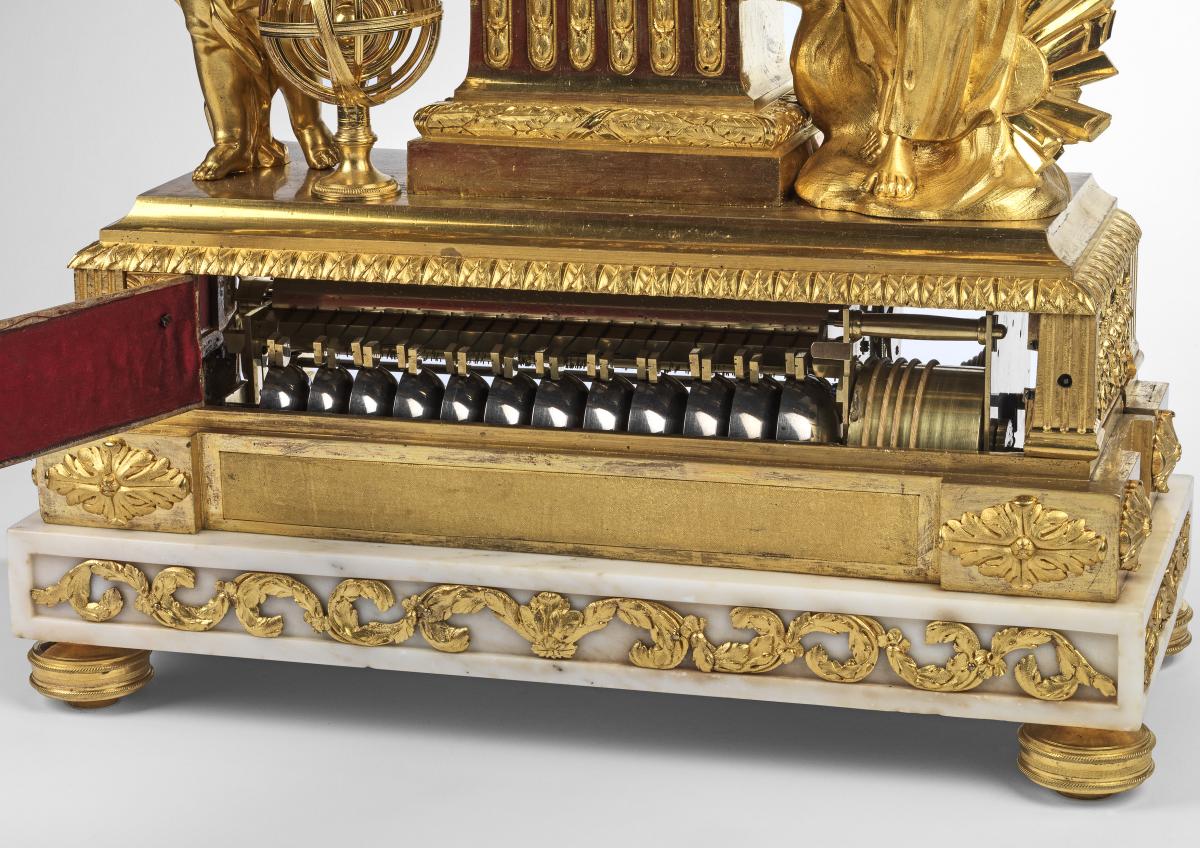
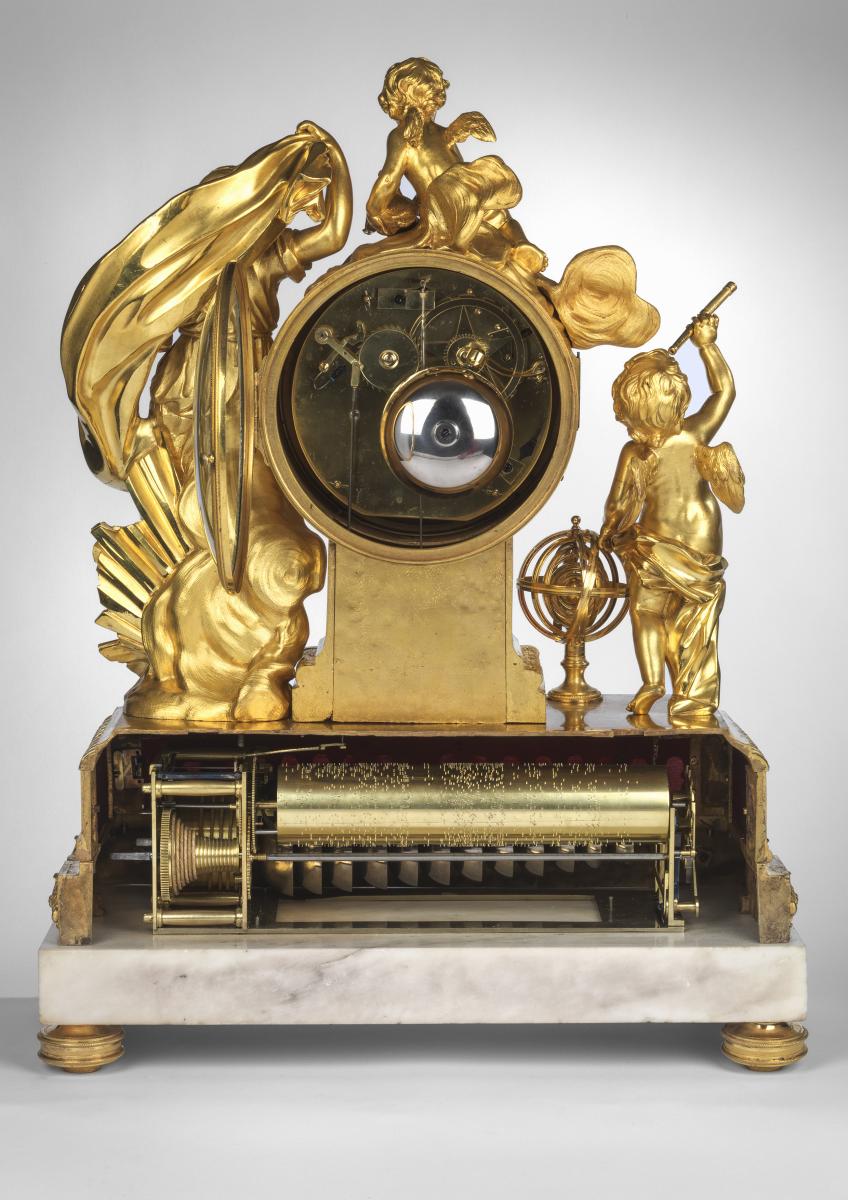
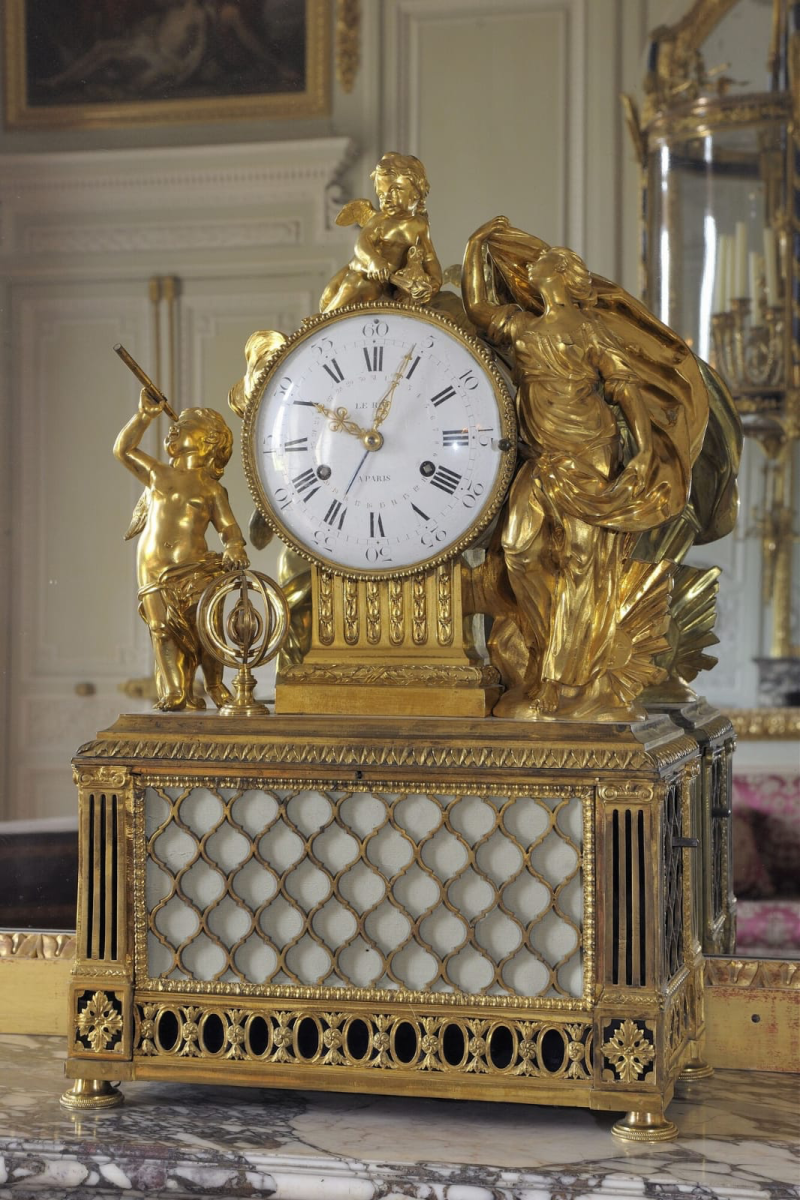
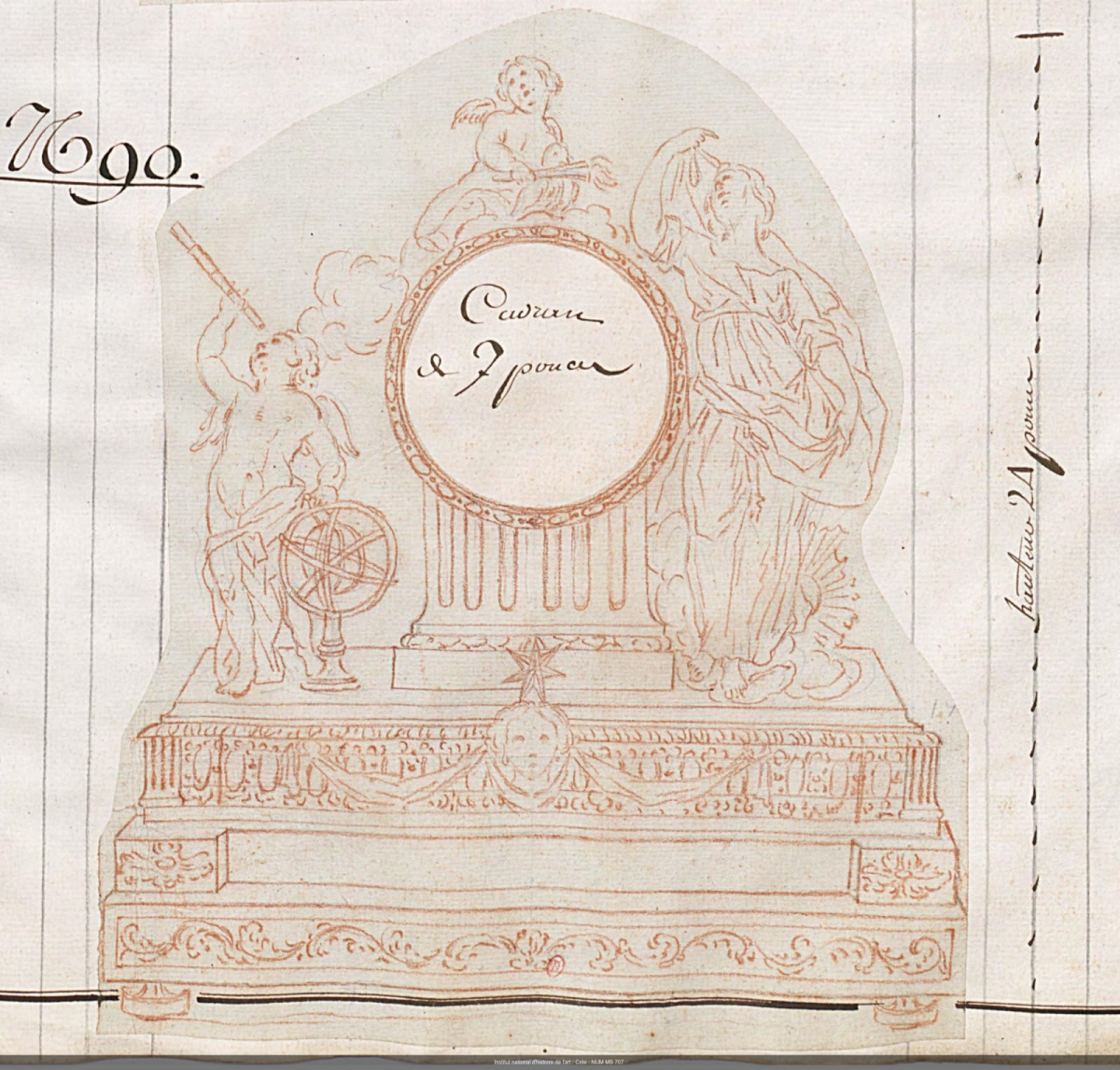
Price on application
This object is eligible for a Certificate of BADA Provenance
The BADA Standard
- Since 1918, BADA has been the leading association for the antiques and fine art trade
- Members are elected for their knowledge, integrity and quality of stock
- Our clients are protected by BADA’s code of conduct
- Our dealers’ membership is reviewed and renewed annually
- Bada.org is a non-profit site: clients deal directly with members and they pay no hidden fees
An Important Louis XVI Ormolu and White Marble Musical Mantle Clock by Antoine Cronier with Enamel Dial Signed by Barbezat. Circa 1775.
An almost Identical Clock is illustrated in P. Kjellberg, L'Encyclopédie de la Pendule Française du Moyen Age au XXe, Paris, 1997, p.249. Another by Barbier Le Jeune was sold at Sotheby’s London 15th May 2014
Antoine Cronier, or Crosnier, (13 January 1732 - after 1806) was a noted clockmaker active during the second half of the 18th century in Paris, France.
In 1763, he was recognized as a maître-horloger. His clocks used bronzes by Robert and Jean-Baptiste Osmond, Edmé Roy, René François Morlay, Nicolas Bonnet, and François Vion and worked with gilder Honoré Noël
Today his clocks are in museum collections including the Musée Nissim de Camondo, the Royal Collection of the United Kingdom, Waddesdon Manor, Harewood House, the Residenzmuseum in Munich, the Neue Residenz Bamberg, the Royal Palace of Turin, the Royal Museums of Art and History in Brussels, the Nationalmuseet in Stockholm, the Boston Museum of Fine Arts, the Huntington Library, and the Pavlovsk Palace.
Provenance
Mr Perez Olaguer-Felieu, Barcelona Spain
Antonio María Pérez de Olaguer Feliu (1907–1968)
Antonio Pérez de Olaguer descended from distinguished families both from his father’s and mother’s side. The ancestors of his father originated from Andalusia; his grandfather, Manuel Pérez Marqueti (1829-1889), came from Cádiz. A physician serving in the navy, in the mid-19th century he engaged in trade with the Philippines, then managed state contracts in the islands, and eventually developed his own retail and real estate business in Manila. He became one of the richest men in the Philippines and left a fortune to his two sons. The business was inherited by his sons: Antonio's father Luis Pérez Samanillo (1868–1936) and Rafael, who enlarged it.
The collapse of Spanish rule in 1898 did not affected the Pérez business much. However, Luis started to invest in Spain, mostly in Catalonia. In the early 20th Century the family permanently settled in a luxury Barcelona residence, managing their overseas economy remotely. They had 9 children, some of them born in the Philippines; Antonio was the youngest one.
Dimensions
47 x 21 x 64 cm HighThe BADA Standard
- Since 1918, BADA has been the leading association for the antiques and fine art trade
- Members are elected for their knowledge, integrity and quality of stock
- Our clients are protected by BADA’s code of conduct
- Our dealers’ membership is reviewed and renewed annually
- Bada.org is a non-profit site: clients deal directly with members and they pay no hidden fees


